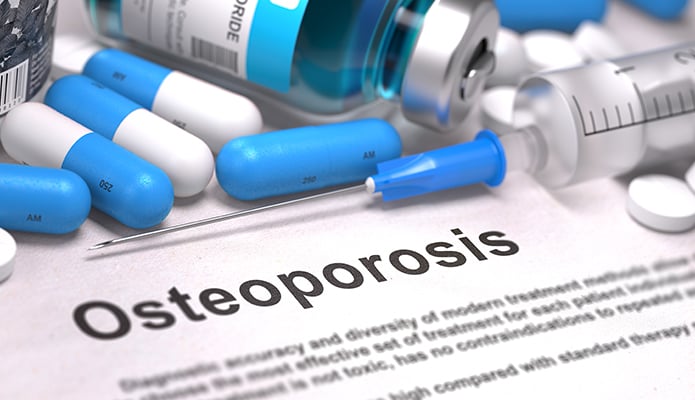
Osteoporosis is a common condition that weakens bones, making them fragile and more prone to fractures. Affecting millions worldwide, it often progresses silently until a break occurs. Fortunately, modern osteoporosis medications and bone-supporting supplements are helping people build stronger bones safely and reduce fracture risk effectively. In this blog, we’ll explore the leading treatments of 2025 — from bisphosphonates to calcium and vitamin D supplements — and how they work together to restore and maintain bone strength.
Understanding Osteoporosis and Bone Health
Osteoporosis causes bones to lose density and strength over time, increasing the risk of fractures — especially in the spine, hips, and wrists. It’s most common in postmenopausal women, but it can affect anyone due to aging, hormonal changes, or calcium deficiency. The goal of treatment is to slow bone loss, increase bone density, and prevent fractures through medication and lifestyle management.
Top Osteoporosis Medications in 2025
Bisphosphonates – The First-Line Treatment
Bisphosphonates remain the most prescribed bone density medications, helping slow bone loss and improve bone mass. Common options include:
- Alendronate (Fosamax)
- Risedronate (Actonel)
- Ibandronate (Boniva)
- Zoledronic acid (Reclast)
Typically taken orally or via infusion, these drugs reduce the breakdown of bone tissue and lower fracture risk by up to 50%.
Denosumab (Prolia) – Targeted Bone Protection
An injectable medication given every six months, denosumab works by blocking the activity of bone-destroying cells. It’s especially effective for postmenopausal women or patients who cannot tolerate bisphosphonates. Clinical studies show significant gains in bone mineral density (BMD) with continued use.
Anabolic (Bone-Building) Therapies
Teriparatide (Forteo) and abaloparatide (Tymlos) stimulate new bone formation, making them ideal for severe osteoporosis cases. Newer drugs like romosozumab (Evenity) combine both bone-building and anti-resorptive effects for faster results. These are typically used for a limited period (up to 2 years), followed by maintenance therapy with other medications.
Supporting Bone Health with Supplements and Nutrition
Calcium and Vitamin D Supplements
Adequate calcium and vitamin D intake remains the cornerstone of any osteoporosis treatment plan. Calcium supports bone strength, while vitamin D enhances calcium absorption. Recommended daily intake:
- Calcium: 1,000–1,200 mg
- Vitamin D: 800–1,000 IU
These can be obtained through diet (dairy, leafy greens, fish) or supplementation if dietary intake is insufficient.
Lifestyle and Exercise
Regular weight-bearing exercise (walking, dancing, resistance training) helps strengthen bones naturally. Avoiding smoking, excessive alcohol, and maintaining a balanced diet further supports medication effectiveness.
Fracture Prevention: The Ultimate Goal
Osteoporosis treatments aim not only to strengthen bones but also to prevent fractures that can severely impact mobility and independence. Consistent use of medication, along with healthy habits, can reduce fracture risk by more than 50%. Routine bone density scans (DEXA) help track progress and guide ongoing treatment.
FAQs: Osteoporosis Medications and Bone Health
01. Which osteoporosis medication works fastest?
Anabolic medications like teriparatide and romosozumab work fastest by actively building new bone, improving density significantly within months.
02. Are there side effects with osteoporosis medications?
Yes, mild side effects may occur, including digestive issues, muscle pain, or injection reactions; your doctor selects the safest option.
03. Do I need supplements while taking osteoporosis medicines?
Yes, calcium and vitamin D supplements support bone strength and help maximize the effectiveness of all osteoporosis medications.
04. How long should I stay on osteoporosis treatment?
Treatment duration varies, typically several years; bisphosphonates may involve breaks, while anabolic therapies last up to two years.
05. Can exercise improve results from osteoporosis medications?
Absolutely. Weight-bearing and resistance exercises enhance bone strength, improve medication response, and significantly reduce long-term fracture risk.
Recent Post






